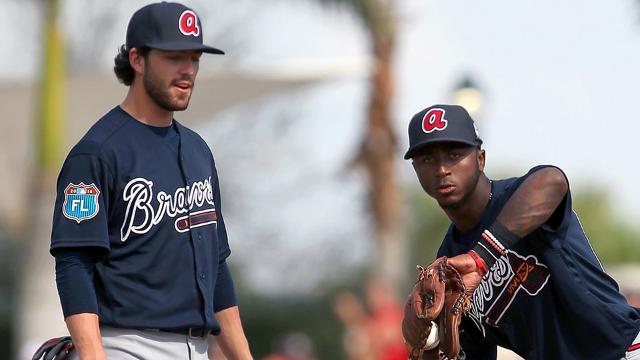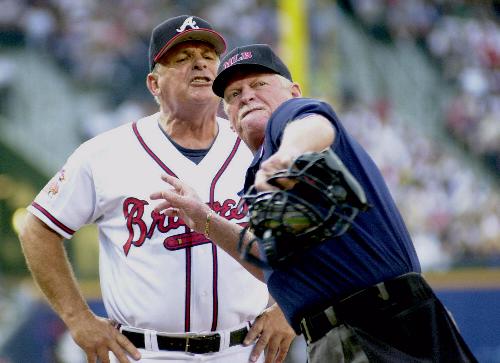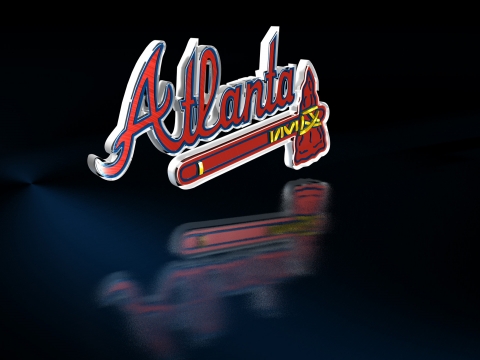Answers On The Fly: A Reader Mailbag
Welcome to Answers On The Fly. Answers On The Fly is our reader mailbag feature in which our writers give insight into questions fans are asking. After a lengthy absence due to real world happenings, the feature has returned to its regular weekly spot. Fans from all over the Greater Metropolitan Decatur, GA area anticipating the return have submitted questions that they want our armchair GMs to answer.
Submit your questions the following ways:
- Email us
- Tweet us (@OFRSports)
- Post them in the Outfield Fly Rule Facebook group.
Now, on to the questions.

I know it’s early, but what’s your closest take to an opening day line-up and why?
– Lynne T.
Lawrenceville, GA
Andy Harris: Here’s a line-up that almost certainly will not be the Opening Day line-up because there will certainly be someone who is hurt or traded before April 3, but seems the most likely right now.
- Ender Inciarte, CF
- Dansby Swanson, SS
- Freddie Freeman, 1B
- Matt Kemp, LF
- Nick Markakis, RF
- Sean Rodriguez, 2B
- Tyler Flowers, C
- Adonis Garcia, 3B
- Julio Teheran, P
Some notes on this line-up:
- Brian Snitker has already discussed the likelihood of Swanson moving up to the #2 spot, so it doesn’t seem to far-fetched that he’ll be in that spot right away. The Braves only managed a .290 OBP and 13 homers out of the #2 spot in 2016, the place where sabermetric types say a team should put its best all-round hitter, so hopefully Swanson will boost those numbers.
- The biggest wildcard is at second base. Assuming everyone is healthy, there’s really three options, Sean Rodriguez, Jace Peterson, and Ozzie Albies. While I’m on record that Albies has at least an even shot of winning the job outright, I’ll stay conservative for now and choose one of Peterson and Rodriguez. Even though the likely Opening Day starter for the Mets will be right-handed (my guess is Noah Syndergaard), I think the Braves will start from day one in transitioning Peterson to a bench role… if he’s still on the squad. If Albies makes the squad, he’ll definitely start; he’ll get the Swanson treatment and hit #8 with everyone else moving up one, or possibly the Mallex Smith treatment of hitting #9 with the pitcher hitting #8.
- The second biggest wildcard is third base, but I think Garcia holds on to the job for now. Rio Ruiz may be ready to take over the position at some point in 2017, but I believe that the Braves will want him back in AAA, specifically to get at-bats against left-handed hitting. If Albies wins the second base job, that opens the possibility of Rodriguez starting at third and Garcia being benched, but I think Garcia would have to play his way out of the job first.
- Flowers and Garcia could go either way at #7 and #8, but I think Snitker would put Flowers’ slightly better on-base skills in front of Garcia.
- At this point, I am assuming Flowers and Kurt Suzuki will split time fairly evenly at catcher, but Flowers and Teheran were particularly good together last season and I don’t see the Braves changing that.

Why did the Braves pick up Adam Walker if they were just going to get rid of him a few days later?
– Multiple Submissions
Chris Jervis: It was reported that the Atlanta Braves had claimed power hitting OF Adam Walker off waivers from the Baltimore Orioles on January 26th. To make room for Walker on the 40-man roster, the Braves placed C Tuffy Gosewisch on waivers, and he was later claimed off waivers by the Seattle Mariners. Less than a week later, on January 31, the Braves placed Walker on waivers.
Placing Walker on waivers does not mean that the Braves were trying to get rid of him. Rather, it is a procedural move to remove him from the 40-man roster. Since the Braves claimed a player who was on a 40-man roster, they had to put him on their own 40-man. But, they likely felt that he wasn’t good enough to justify occupying a 40-man roster spot for the year, so they wanted to remove him from that spot. In order to do so, they must place the player on waivers for 48 hours, which allows any team to claim him for a nominal fee ($50,000), provided he is assigned to the claiming team’s 40-man roster.
This was how the Braves claimed Walker in the first place; Baltimore was attempting to remove him from their 40-man roster to assign him to a minor league affiliate. The Braves claimed him while he was exposed on waivers. This is also how the Braves lost Gosewisch; he was placed on waivers to remove him from the 40-man, and Seattle claimed him. The Braves were simply removing Walker from the 40-man roster so that they could outright assign him to a minor league affiliate. It was a low-cost way of acquiring a player who the Braves thought may have some upside or bounce-back potential. It only cost the team $50,000 to acquire Walker, and if he gets claimed as they try to pass him through waivers, they receive $50,000 from the team claiming him. there really is no downside to the move.
Does this mean another move is forthcoming? Possibly. The Braves are still in need of a 4th OF option, preferably one who can play CF. However, it’s probably more of a sign that the Braves don’t see Walker in their immediate short-term plans for the big league club. He’s available if they need him, but he probably isn’t someone they are planning around.

What are the nit picky details of the one visit to the mound for managers, acting managers, and pitching coaches? I have seen some really funny occasions of this on SportsCenter, Baseball Tonight, and YouTube. When are they thrown out of the game for violating this rule?
– Matt G.
Jacksonville, FL
Chris Jervis: Prior to 2016, mound visits were probably one of the major contributors to game times becoming longer and longer. Managers and coaches could come out to speak to a pitcher once per inning before having to remove that pitcher. But that rule applies on a per pitcher basis, meaning that with the advent of specialized and multiple relievers being used, a manager could make three, four, or even more visits to the mound.
As a general rule, managers/coaches are allowed to visit the mound once per inning, per pitcher (generally called a ‘coaching’ visit). If they come out a second time, the pitcher must be removed from the game. Each visit is limited to 30 seconds (begun in the 2016 season), which begins from the time the manager leaves the dugout and time has been called by the umpire. The visit is considered concluded when the manager leaves the designated mound area (generally, the 18-foot dirt circle). If the manager returns to the mound area, even if they did not yet return to the dugout, it is considered a second visit, and the pitcher must be replaced. A manager can leave the mound area temporarily to notify the umpire about a substitution, and then return to the mound without it being considered a second visit.
There is a caveat to the rule that pitcher must be removed from the game if the manager makes two visits to the mound in the same inning, for the same pitcher, IF it is also the same batter. Apparently, Rule 5.10 (l) states that a manager must be warned by the umpire, and that the pitcher must be removed from the game AFTER the current batter is retired or reaches base:
“In a case where a manager has made his first trip to the mound and then returns the second time to the mound in the same inning with the same pitcher in the game and the same batter at bat, after being warned by the umpire that he cannot return to the mound, the manager shall be removed from the game and the pitcher required to pitch to the batter until he is retired or gets on base. After the batter is retired, or becomes a baserunner, then this pitcher must be removed from the game.”
A manager or coach is permitted to come to the mound to check on an injury or potential injury to a pitcher without it being considered a ‘coaching visit.
Typically, the ejections I have seen are the result of a manager or coach arguing with the umpire about the ruling, not necessarily because of the ruling.




Leave a Reply